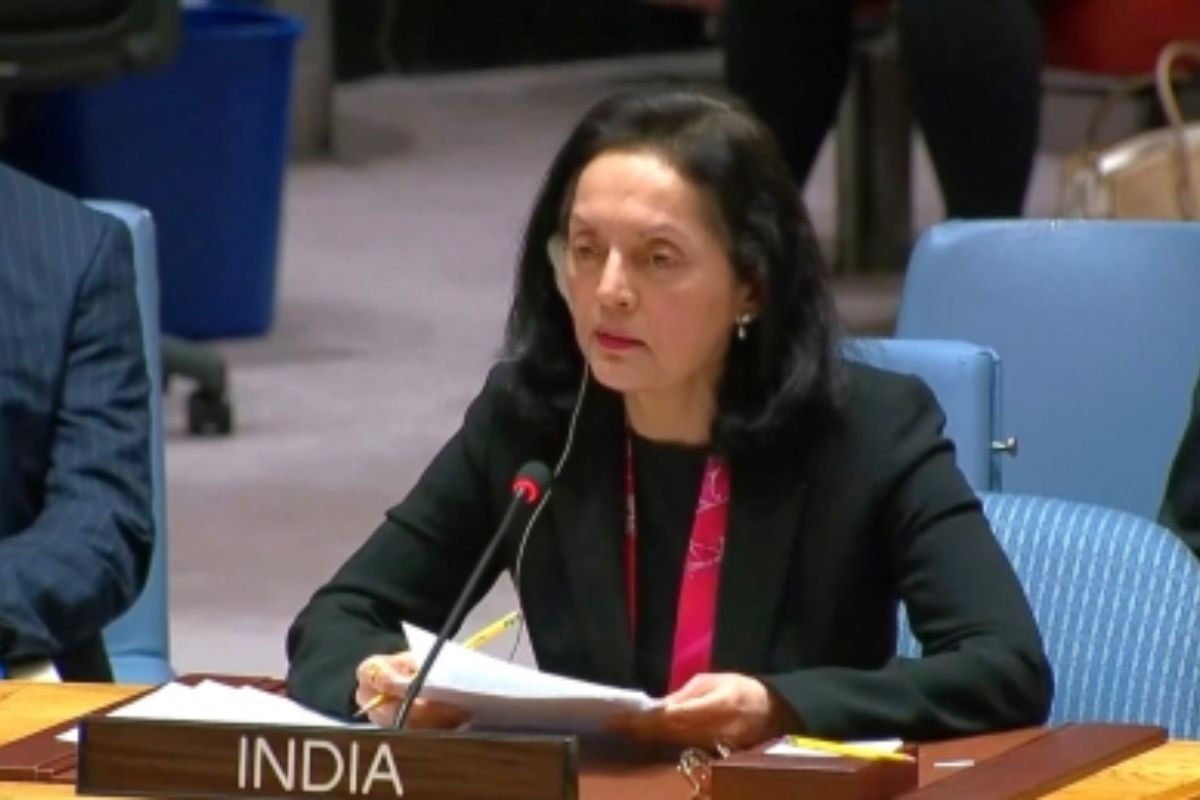Panchayat Sammelan on ease of living in Agra on Tuesday
The Ministry of Panchayati Raj is set to convene its second Panchayat Sammelan in Agra on Tuesday.
India’s Permanent Representative to the UN, Ruchira Kamboj, shed light on the remarkable progress made in women’s leadership within India’s Panchayati Raj system

India's Permanent Representative Ruchira Kamboj (Photo:IANS)
India’s Permanent Representative to the UN, Ruchira Kamboj, shed light on the remarkable progress made in women’s leadership within India’s Panchayati Raj system, saying, “India prides itself on a unique system of rural governance known as the Panchayati Raj–an emblem of decentralised power at the grassroots level.”
Speaking at India’s #CPD57 side event, “Localising the SDGs: Women in Local Governance in India Leads the Way,” Kamboj emphasised the transformative impact of women’s empowerment at the grassroots level.
“The Panchayati Raj is a sterling example of direct democracy that facilitates active participation from all residents of a Panchayat through the Gram Sabha,” Kamboj highlighted, underscoring the system’s decentralised power structure. This unique aspect sets it apart from conventional municipal governance models found elsewhere in the world, making it a model for fostering inclusive decision-making processes.
Advertisement
Highlighting India’s commitment to gender equality, Kamboj noted, “A significant milestone was achieved with the constitutional amendment in 1992, which mandated that at least one third of all elected roles in local governance be reserved for women.” This constitutional provision was a landmark step towards ensuring equitable representation of women in decision-making bodies at the grassroots level.
Kamboj also celebrated the elevation of women’s representation to 50 per cent in 21 states within India, stating, “Today, of the over 3.1 million elected representatives, more than 1.4 million are women.” This surge in women’s participation reflects a broader societal shift towards recognising and valuing women’s contributions to governance and community development.
The local planning process within the Panchayati Raj system, as Kamboj explained, is meticulously aligned with the localisation of sustainable development goals, with a primary focus on empowering women. “The impact of such initiatives has been transformative,” she remarked. By integrating gender considerations into development planning, the Panchayati Raj system ensures that women’s needs and priorities are effectively addressed, leading to more inclusive and sustainable outcomes, she added.
Commending the efforts of women leaders in breaking traditional barriers, Kamboj emphasised their role in revolutionising communities by enhancing education, healthcare, sanitation, and livelihoods. Women leaders in Panchayati Raj institutions have been instrumental in driving positive change at the grassroots level, leveraging their unique perspectives and experiences to address pressing social and economic challenges.
Acknowledging the challenges faced by women in leadership, Kamboj stressed the need for supportive legal frameworks, robust capacity building initiatives, and collaborative partnerships to advance gender equality. “India’s experience provides invaluable insights and lessons on advancing and sustaining women’s leadership,” she remarked, emphasising the importance of creating an enabling environment for women to thrive in governance roles.
“As we move forward, let us renew our dedication to fostering women’s leadership in local governance, recognising its transformative power in achieving gender equality and the sustainable development goals,” Kamboj concluded, invoking the words of Mahatma Gandhi to underline the immeasurable strength of women.
Advertisement